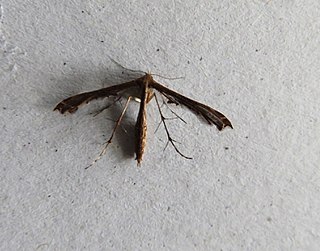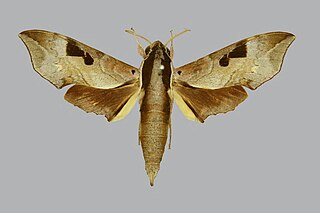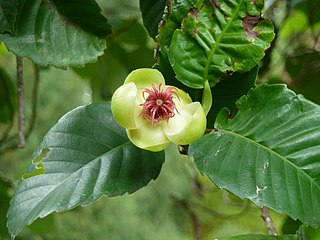This page is based on this
Wikipedia article Text is available under the
CC BY-SA 4.0 license; additional terms may apply.
Images, videos and audio are available under their respective licenses.

Dilleniaceae is a family of flowering plants with 11 genera and about 430 known species. Such a family has been universally recognized by taxonomists. It is known to gardeners for the genus Hibbertia, which contains many commercially valuable garden species.

Thale Ban National Park is a forested area south of the Banthat Mountains in southern Thailand, in the south of Satun Province bordering Malaysia; it borders Taman Negeri Perlis park. The park was established on 27 October 1980. It covers an area of 196 square kilometres of Khuan Don and Mueang Satun districts.

Manas National Park or Manas Wildlife Sanctuary (Pron:ˈmʌnəs) is a national park, UNESCO Natural World Heritage site, a Project Tiger reserve, an elephant reserve and a biosphere reserve in Assam, India. Located in the Himalayan foothills, it is contiguous with the Royal Manas National Park in Bhutan. The park is known for its rare and endangered endemic wildlife such as the Assam roofed turtle, hispid hare, golden langur and pygmy hog. Manas is famous for its population of the wild water buffalo.

The Phayre's leaf monkey, also known as Phayre's langur, is a species of lutung native to Southeast Asia including India, Bangladesh, Myanmar, Thailand, Laos, Vietnam and China. It is listed as Endangered on the IUCN Red List and is threatened by hunting and loss of habitat.
The species epithet commemorates Arthur Purves Phayre.

Bukit Baka Bukit Raya National Park is a national park located on Borneo Island, Indonesia. It is named after the mountains of Bukit Baka and Bukit Raya, part of the Schwaner mountain range at the border of Central and West Kalimantan.

Dillenia suffruticosa is a species of Dillenia found in tropical South East Asia in secondary forest and swampy ground. It is a large, evergreen shrub to 6 metres high. It flowers continuously with yellow flowers 10 to 12 cm wide.
Pollanisus commoni is a moth of the family Zygaenidae. It is found along the coast of north-eastern Queensland, Australia.

Oxyptilus causodes is a moth of the family Pterophoridae. It is known from India, Sri Lanka, Myanmar and was recently discovered in New Guinea and Australia.

Ouu Khatta or Ou Tenga (Assamese) is a sweet and sour chutney made of elephant apple (ouu) Dillenia indica in jaggery in the Indian state of Odisha and Assam mostly in post monsoon season. Sometimes ouu is added to dal or dalma. It is rich in vitamin C.

Enpinanga borneensis is a moth of the family Sphingidae. It is known from Thailand, Malaysia, Indonesia and the Philippines (Palawan).

Phu Sang National Park is a national park in Northern Thailand.

Dillenia alata, commonly known as red beech or golden guinea tree, is a rainforest tree in the Dilleniaceae family, found in northern Australia, New Guinea and nearby islands. It is a medium-sized tree with reddish-brown papery bark. The leaves are 11–23 mm long and 6–13 mm wide and connected to the stem by a stem-clasping winged petiole. The five-petalled yellow flowers have a cluster of pink or red styles, anthers and staminoides at the centre.
Red beech is a common name applied to several species of trees:

Dillenia triquetra is a plant endemic to the island of Sri Lanka, where it is known as දියපර (diyapara) by local people.
Kent Ridge is the name of a ridge and a neighbourhood located in Pasir Panjang, in the Queenstown Planning Area of Singapore. The area is notable for housing two parks within the Southern Ridges, Kent Ridge Park and HortPark. The main campus of the National University of Singapore is located adjacent to it, straddling along the southern boundary of Kent Ridge.
The Vangunu giant rat, locally known as the vika, is a giant arboreal species of rodent in the family Muridae. The rat was discovered in the island of Vangunu in the Solomon Islands in 2015, after years of searching based on local stories, and described in 2017. It was identified as a new species on the basis of its skull, skeleton and a detailed DNA analysis. The single individual initially collected from a felled tree measured 46 cm long, weighed between 0.5 and 1.0 kg and had orange-brown fur. Its diet is believed to include thick-shelled nuts like ngali nuts and coconuts, and probably fruits. The species is likely to be designated critically endangered, due to the small amount of forest habitat remaining on the island and ongoing logging.














